This post is part of a larger deep dive
Curious about the role of Many-worlds interpretation in Dark Matter? Check out Dark Matter Explained!
Or read the full Dark Matter article!
This post is part of a larger deep dive
Curious about the role of Many-worlds interpretation in Dark Matter? Check out Dark Matter Explained!
Or read the full Dark Matter article!
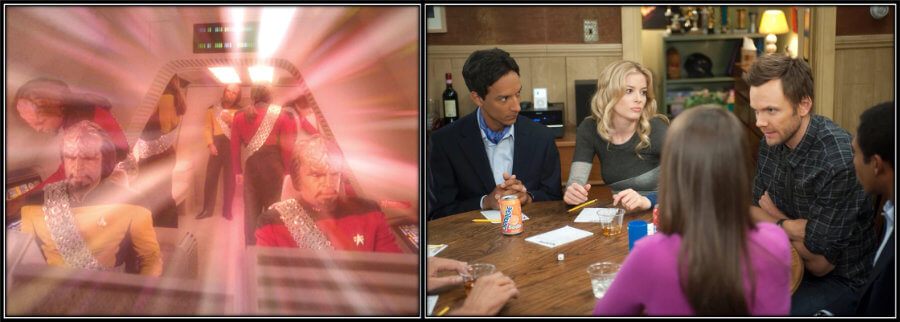
The parallel-worlds theme in the entertainment business is definitely not new. Many novels, films and TV shows have adopted the idea that there might be, in the immensity of the cosmos, other worlds that look just like ours.
Think of the episode “Parallels” from the TV show Star Trek: The Next Generation or “Remedial Chaos Theory” from the TV show “Community”. .
What makes Dark Matter different is that it tries to adhere to the original interpretation with a high degree of fidelity (even though plot holes still exist).
Crouch did his homework and his explanations are accurate and very understandable even for laymen.
I’ll not comment on the mechanisms of the box and ampoules that would allow you to reach a state of Superposition. Quite frankly, nobody has a clue how this could even work in theory, so I doubt Crouch based his ideas on solid research (other than vaguely suggesting altering the chemistry of the prefrontal cortex).
Let’s start this analysis with a few interesting ideas from the book that we can immediately link to the Many-world interpretation (if you don’t know what the Many-world interpretation is, please refer to the section Many-worlds-interpretation).
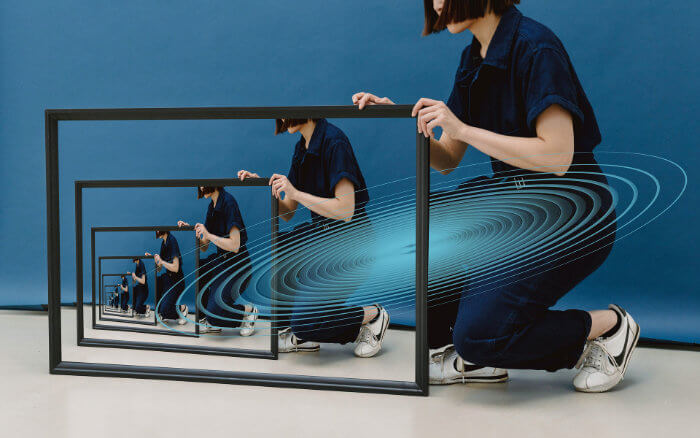
Jason’s earlier research years had focused on developing a cube that would allow putting a macroscopic object into Superposition.
As Jason recalls:
“My concept for my tiny cube was to create an environment protected from observation and external stimuli so my macroscopic object […] could be free to exist in that undetermined cat state and not decohere due to interactions with its environment”.
If you read the section Many-worlds-interpretation, this should all now be familiar to you.
In short, Superposition occurs when two waves interact and create areas of constructive (the peaks and troughs) and destructive (when peaks meet troughs and cancel each other out) interference. The higher the peak the more likely it is that a particle or groups of particles is in a particular state (e.g., location).
For example, for a moving electron, the higher the wave peak the more likely the electron will be found at that location when a measurement is made.
Jason2 refined this line of investigation and managed to upscale it to human beings. Of course, Jason2 faced a problem. Our consciousness would never allow us to be in Superposition, because the mere act of us observing would “collapse” the wave function and we would experience one and only one reality.
So, Jason2 asked a colleague to manufacture a psychoactive compound that could temporarily silent three brain regions within the prefrontal cortex – a major site in the brain thought to be involved in decision making and attentional control.
Thus, taking the drug would effectively turn off the “observation deck” of our brain, allowing superposition to take place.
The box would prevent others from observing whoever was in a Superposition, thus, preventing decoherence.
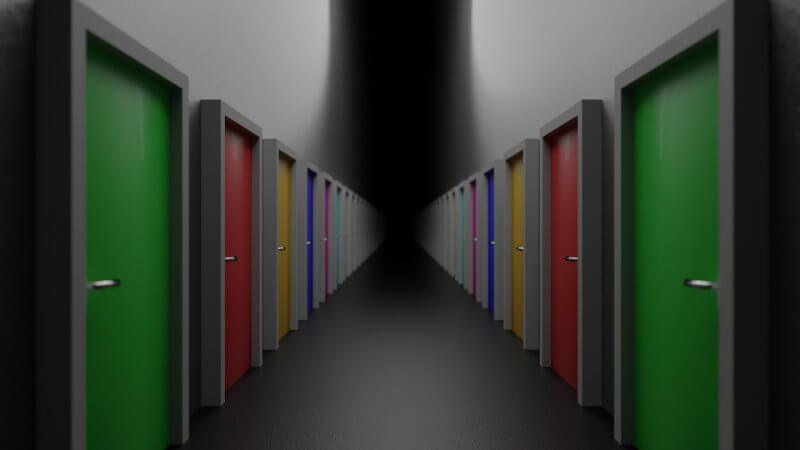
When Jason and Amanda enter superposition, they find themselves in a never-ending corridor, with an infinite number of doors perfectly aligned.
The corridor that Jason and Amanda ended up in is one of the coolest and weirdest descriptions in the entire novel.
The corridor, as Jason explains, isn’t a concrete physical location. It is a product of their minds, as their brains try to make sense of Superposition. Remember, our brains are very limited; our senses have evolved to make sense of a 3D world.
Visualising superposition of states of even a single fundamental particle (such as an electron) would be way out of the possibilities of the most brilliant of brains.
Each door is essentially a quantum state in the wave function. Remember the double-slit experiment? (if not, please read section The double-slit experiment) I mentioned that the ultimate wave function is composed of all possible locations of the electron entangled with our environment. Likewise, the corridor is the ultimate wave function as interpreted by Jason’s and Amanda’s brains.
Also, in the context of the double-slit experiment, each peak in the wave function of the ultimate wavefunction corresponds to a reality where the electron exists at a particular location. Likewise, in Dark Matter, each door in the corridor corresponds to a possible reality.
Also, remember that when we make an observation, the wave function of the quantum system becomes entangled with the particles of the environment (ourselves included), which causes decoherence and the emergence of alternate timelines.
Decoherence is represented by the opening of a door. Once a door is opened, a decision has been made, and Jason and Amanda will experience one, and only one, reality behind that door.
Why? Because when they open a door, the outside environment (all those atoms, photons, molecules, etc. that make up the environment) interact with the interior of the box (or, to be precise, their wave functions interact).
Since the interior of the box is in a state of superposition, the wave function of the macroscopic object (the environment) “forces” the superpositioned quantum system to acquire a definite state (decoherence kicks in). The result: you experience one and only one reality.
That is why when they go through a door the corridor collapses and they find themselves in the ordinary box.
The drug will only have an effect within a specific amount of time. However, within that time, Jason and Amanda are free to open the same door several times, and will find themselves in the exact same world.
Importantly, as soon as they take another ampoule, the corridor resets itself, so if they open the same door, the world will be a different one.
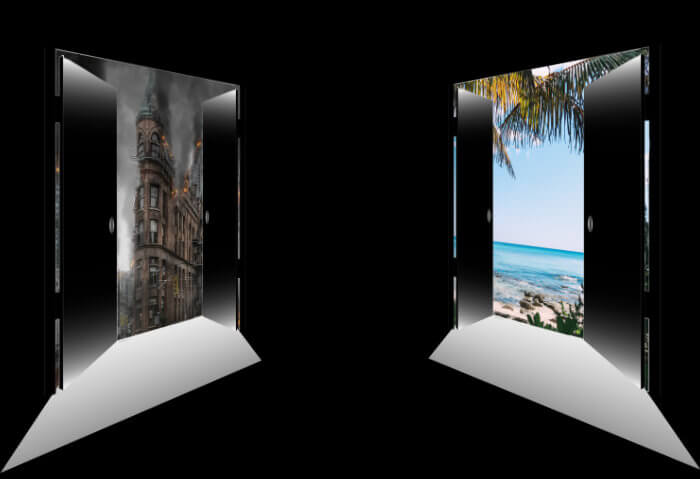
Now, later in the novel, Jason has the epiphany that they are able to control the type of worlds they can summon. When they open the doors, they will not find themselves in a world that has been purely dictated by chance. The world that presents itself is determined by the feelings the person is having when she/he opens a door.
For example, if your emotional state at the time of opening a door is that of being afraid, desperate and anxious, then the world will be a reflection of those negative feelings (e.g., a ruined and desolated city).
If, on the other hand, your feelings are of joy and happiness, then the world might turn out to be pleasant.
So, there is nothing random about the worlds found behind the doors. The key is to control one’s feelings, be specific about the kind of thoughts that emerge and guide all of these feelings and memories in a positive direction.
At this point, I have to say that I found the idea very silly.
Even if you are a person with an exceptionally emotional self-control, feelings are likely to sway within seconds, especially under duress.
Also, I’m not sure how past memories, which are very unreliable even for recent events, would allow the summoning of the particular world you are familiar with.
You see, even conjuring the image of Daniela in a dress with the wrong color could catastrophically send Jason to a completely different world; one, for instance, where Daniela has that kind of dress, but she is a serial killer (remember that under the Many-worlds interpretation, if a world is possible to exist, it will exist).
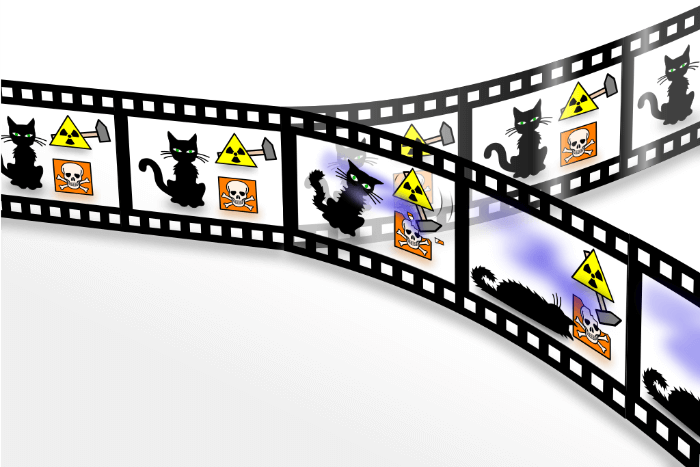
Now, the part when Jason finds that there are multiple Jasons in his world. Even though I’d have liked to say that I saw it coming, I didn’t. This was quite unexpected turn of events, and on the positive side. I was already expecting an epic (if cliché) battle with Jason2 for Daniela, but was happy to have been proven wrong.
So, according to the Many-worlds interpretation, splitting of timelines occurs pretty much all the time.
In the corridor Jason is in a superposition of states, so he can’t split any more than that (since superposition already entails all possible outcomes). However, as soon as he enters an actual world, his decisions in that world mean that branching will occur.
And remember from the discussion in the section Many-worlds-interpretation: every single time a quantum particle is faced with a choice, the timeline splits. And this can happen all the time and everywhere; a quantum process in the electrons in Jason’s brain can cause the timeline to split, and so does a supernova explosion in a far away galaxy.
Now, that’s all fine and good, but it comes with an important implication. Crouch seriously misrepresented the amount of Jasons that would have been “created”.
As I’ve described above, splitting is happening all the time – possibly even an infinitely amount of times.
Thus, even though it would be perfectly plausible that not every Jason could make it through, infinite is a really huge amount to work with.
And this brings me to one of the most uncomfortable aspects in the novel, and one which I think might not be obvious to many readers.
As you keep reading the book, you may feel that the Jason that is narrating the story is the actual Jason.
For example, do you think that Daniela should choose the Jason that she picked up at the police headquarters?
If your answer is yes, then I have to tell you that Daniela would be just as correct picking any of the other Jasons.
Think about it. We know that Jason will split as soon as he enters another world, that’s a certainty. From that moment on, he will face multiple decisions – some were unfortunate decisions and he died, some were fortunate and he survived.
You might argue that the Jason narrating the story must be the real Jason, because he is in possession of all the memories and feelings related to his life with Daniela and Charlie.
Furthermore, there is no disruption in Jason’s behaviour or thought-processes. He acts like the Jason before the kidnapping, he has the same opinions as he had before the kidnapping, he feels the same towards Daniela and Charlie as he did before the kidnapping, etc.
But, again, that is fallacious thinking.
For example, take the scene where Jason goes to Jason2’s flat, thinking to be his own. As he walks around, he realises, to his chagrin, that it isn’t his flat. He first enters the dining room, goes to kitchen, then living room, and bedrooms.
But what if he had gone first to the bedrooms, then kitchen and finally living room? Would the story line be that different?
Not really. Leighton would still show up, and all the events would turn out to be virtually identical.
But both Jasons exist, and their timelines are almost identical. So, which Jason is the real one?
Again, you might argue that the real Jason is the one that chose the order in the book (first dining room, then kitchen, then bedrooms) because that’s what Jason would do.
But I could counter-argue and say that maybe the actual Jason would first look in his son’s bedroom to see if everything is alright with him.
To stress this point further, in the Many-worlds interpretation, both Jasons exist and will go through almost exactly the same experiences.
In fact, Jason will make even much minor decisions (such as looking either left or right) that could potentially split the timeline, and have negligible effects in the development of the story.
So, many of Jasons’ timelines will run almost entirely parallel, but we are only viewing the timeline of one of them – the timeline in the novel.
In fact, we don’t need to go back that far into the story. What about the scene just before Jason manages to find his Chicago, when he writes his last entry in the notebook:
Sitting in the doorway of the box, I open the notebook.
I’ve been thinking ever since I woke up about what Amanda said in her goodbye note, how I haven’t really written what I feel.
Here goes…
Right after he wrote the full entry, he goes into the box, takes the drug and opens the door that leads to his Chicago.
Now, why am I mentioning this?
Because right before he steps into the box, there might have been a multitude of branchings (remember, a simple change from looking left or right can cause a split).
This means that that particular Jason – the one who had just written the note – will have copious of doppelgangers with the exact mindset to arrive in Jason’s Chicago.
And they will all succeed. They are all the same Jason, one is no more truer than the other.
One thing is for sure though. Whenever the story is narrated about Jason2 and Daniela (when Jason is stuck in Jason2’s world) there is a shift from first-person narration to third-person narration.
This is interesting, because it gives us a subtle cue that Jason2 isn’t considered a “real” Jason.
My argument above is that the Jason that ended up with Daniela shouldn’t be thought of as the real Jason (all Jasons are equally real), but Crouch leaves no ambiguity as to whether Jason2 is a real Jason or not.
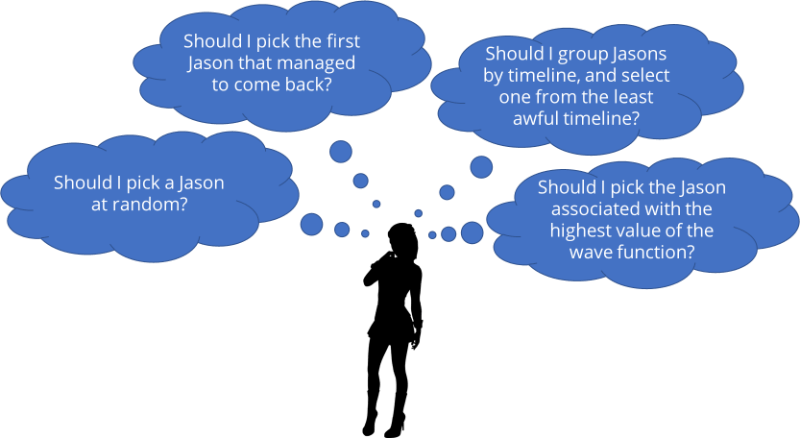
Just out of fun, let’s ask ourselves a question: which Jason should Daniela actually pick?
It’s a rather silly question really, given that I just explained that no Jason is more real than the other, but it’s a fun game nonetheless.
So, how should Daniela base her decision regarding who is the real Jason?:
(1) she should pick one at random (e.g., by drawing lots)
(2) she should choose the Jason that arrived first (not counting Jason2)
(3) she should group Jasons by how similar their timelines were, and choose one from the group that had a more “normal” timeline
(4) she should select the Jason with the timeline that had a greater wave function height
Let’s make this interesting. I’d be very curious to see what option you would find more acceptable/reasonable were you to be in Daniela’s shoes. So, feel free to let me know which option you went for in the comment section below.
Although this may sound like an amusing thought-experiment, it is actually at the heart of many problems for the Many-worlds interpretation.
Even though fairer, most would say option 1 is a terrible option. Picking one at random without knowing what kind of vicissitudes that particular Jason went through just spells disaster.
For example, there is a chance Daniela may pick a Jason whose experiences in the other worlds messed his mind up to such an extent that he, for all intents and purposes, wouldn’t be Daniela’s Jason anymore.
Option 2 is perhaps more appealing to some people. After all, the first Jason to arrive is the one that effectively “won the race”, so it would be fair that he should get credit for it.
However, the problem with option 1 applies here as well. Even though this Jason is just as real as any other, he could be a complete psychopath.
Option 3 is a bit trickier. Daniela could ask all Jasons to report their experiences and maybe even let them go through some psychological evaluation. That way she could determine which timeline was likely to have had less of a negative effect on Jason.
Some Jasons would have very similar timelines, so she could group them based on how severe that timeline was.
After separating the wheat from the chaff, she could draw lots and select one Jason at random from that timeline, since they would all be very similar.
Even though, at face value, this option sounds reasonable, just because the timeline had a relatively innocuous effect on the Jasons, it does not mean it is a typical timeline.
Which brings me to option 4.
I’d like you to think of the wave function of the electron (see the section Surfing on the wave function). The higher the value of the electron’s wave function, the more likely we are to find the electron located there. In contrast, the lower the value of the wave function, the less likely we are to find the electron located there.
So, given many trials, the majority of electrons will hit the region with highest probability, and would, thus, be the most “typical” electron.
Similarly, Daniela could choose a Jason from the group that was associated with the wave function with the greatest height (of course, assuming she had access to such data). That would mean that these Jasons shared the most typical story, and, thus, would diverge less from the initial split (because the least likely the Jason is, the more atypical his experiences were).
It may well be that the Jason that Daniela ended up with came from such a timeline. But what I’d like to point out is that there could have been a timeline in which Jason figured out a way to his Chicago without seeing any deaths for example. This timeline would have been much milder than the timeline described in the novel, even though not very likely.
Thus, if Daniela chose option 3, she could have chosen a Jason that diverged a lot from the initial split.
Of course, if Daniela did go with option 4, she would still need to face the arduous task of choosing one of these typical Jasons, and there is no guarantee that this “typical” timeline would be a good timeline.
So, Daniela would find herself in an impossible position. There would be really no way to know which Jason is her actual Jason, because they are all her Jason – even the psycho ones, I’m afraid.

That brings me to the last chapter of the book.
Probably you wish to know what kind of world do the Dessen family steps in.
Jason tells his son, Charlie, that it should be he who opens the door. Given that we know that the person’s feelings and emotions are key in summoning the right world, what can we say about Charlie’s state of mind?
Confused, possibly doubtful, likely afraid, definitely anxious.
Hhhhmm… I don’t know about you, but none of these feelings sound particularly encouraging to me.
Unfortunately, the description of the new world couldn’t be more uncommitted:
A wind through the door carries the scent of wet earth and unknown flowers.
A world just after a storm.
That can pretty much mean anything: from a wonderful Rivendell to a terrifying Mordor.
My take is this. As a newcomer to the multiverse, I very much doubt that Charlie would have had the capacity to bring about a serene and beautiful world on his first attempt.
Not only because he is a teenager (and we all know the mess that goes inside the mind of teenagers), but that he just had literally been chased, witnessed murder in front of him and almost died.
And if that wasn’t trauma enough, he is told in the moment that will have to choose the world they will be forever stuck in (remember, no more ampoules after that). Quite a responsibility to give a kid, if you ask me…
More likely, the world Charlie summoned would be something along the lines of Jason’s initial experiences with the box, in which case a not so pleasant life would expect them.
To add an even more macabre ending, there’s a terrible flaw with Jason’s escape plan.
We shouldn’t forget that there are splits occurring all the time, including when Jason asks his son to choose the world they will be living in.
Remember, in the multiverse of Many-worlds all the things that can happen, will happen.
In some other timeline, one of the other not-so-nice Jasons will try, and will succeed, in killing Jason.
And again, don’t fall prey to the idea that it’s enough that one of them escaped, so Jason and his family are all and well in some world.
To keep pressing the point, they are all the same Jason, Daniela and Charlie. The timelines are evolving independently, and do not communicate. The Jason that got murdered isn’t thinking in his deathbed “Shoot, I’ll die… Oh well, at least one of my clones survives”.
No.
Jason is completely unaware of the other timelines.
To this Jason, it is game-over.
Gosh, that was a depressing ending for this analysis.
To be perfectly honest with you, I’m probably overthinking the consequences of Jason’s branching. In all likelihood, Crouch meant the Dessen family to meet a happy ending, and that is certainly the conclusion many readers will also reach.
The questions and interpretations I put forward in my analysis above are probably the result of my tendency to wish to stimulate discussion. 🙂
Anyways, in Dark Matter, Jason succeeds in putting himself in a state of Superposition, allowing him to visit every possible world that is allowed in classical physics.
After figuring out a way to control which timeline to travel to, he finally manages to get back to his own world. Encounters with other Jasons that he had unwittingly “created” in the other worlds lead him to take the drastic decision to leave his world and, together with Daniela and Charlie, find subterfuge in an unknown world.
Daniela chose one Jason, the Jason narrating the story, even though that choice is still questionable. Any other Jason would be justified. In fact, unless we collect every Jason’s travel report, psychological profile and wave function, there is no way to know if Daniela has made the “correct” choice (if there is even one).
It is also unclear what fate awaits the Dessen family. Charlie is given the task to choose a world that they will forever be. Probably, it’s all well and good, and they emerge in a world not very dissimilar to ours.
I put forward a different idea though, that the Dessen family may step into a world of chaos, not unlike the worlds from Jason’s initial interactions with the box. Charlie must have been in a whirlpool of emotions at the critical period to conjure up a world, and this would have had repercussions.
I would like to conclude this article with one last observation. What will Jason, Daniela and Charlie do in this new world? Even if the world they arrive in is benign, and assuming there is a version of them already living there, will they attempt contact? Will this new world require some unknown technology for identification? If so, how will they be able to integrate themselves in the society? Will they end up in jail, guinea pigs in a lab, be forever on the run?
I sense plenty of material for sequels here. 🙂
Some of you may dismiss Crouch’s choice to use parallel universes in Dark Matter as probably corny, hackneyed and overused.
Even more of you probably think the Many-worlds interpretation is the product of some flamboyant physicist’s whim that probably watched way too much Star Trek.
But know this, the Many-worlds interpretation is a valid framework to explain quantum mechanics and how it translates to classical physics.
In fact, it is one of the few interpretations that provide an escape route to many paradoxes, such as time-traveling into the past (if that is even possible).
I guess I’ll re-watch The Terminator in a different light now. 🙂
See you in the next article!
Books
Greene, Brian. The Hidden Reality.
Youtube
About the double-slit experiment:
About the Many-worlds interpretation:
Leave a comment
Add Your Recommendations
Popular Tags